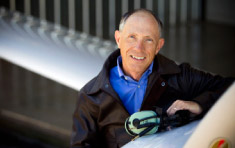 The NTSB looks at the annual carnage that occurs in all modes of transport to determine its top 10 list of things not to do. These are the areas that, in the board’s view, require immediate attention from the regulatory agencies and the affected industries to save the most lives.
The NTSB looks at the annual carnage that occurs in all modes of transport to determine its top 10 list of things not to do. These are the areas that, in the board’s view, require immediate attention from the regulatory agencies and the affected industries to save the most lives.
Topping the list this year is distraction. Humans, despite the phrase often included in résumés, are notoriously poor multitaskers. While we can keep a number of pies in the air simultaneously, when it is life-critical and must be done with 100-percent accuracy, at least one pie occasionally hits the floor with messy results. I’d bet that the Flying Wallendas—the world-renowned high wire aerial performers—are not thinking about their next business deal, the great meal they had last night, or who will be the next NBA superstar when up on the wire. It’s a job that requires 100-percent concentration—not unlike aviation.
Nearly all GA stall accidents are the result of not paying attention to the angle of attack. Three recent air carrier accidents—Colgan Air, Asiana, and Air France—all involved distracted crews not minding the most important thing—keeping the wing happy.
As much as we practice them in primary training, stalls typically don’t occur in the way they are practiced. They usually don’t occur at a safe altitude with the pilot literally poised to recover at the first indication. The FAA has attempted to introduce distraction over the years by having checkride applicants look for a dropped pencil, tune a radio frequency, or some other similarly clumsy ruse. It’s not especially effective because when we’re being evaluated, everyone is on their best behavior.
The annual gear-up landing toll, in the hundreds, costs all of us tens of millions of dollars—although it’s good for shops and the spare parts business. The standard joke is, “I was distracted by the darn warning horn blaring in my ear and couldn’t focus on the landing.” But before that point, something else was distracting the pilot from getting the rollers down.
A recent almost-horror story involved an engine top overhaul where four of six cylinders were not properly torqued to the crankcase. The fault showed up about 10 flight hours later. The owner noticed an oil leak and took the aircraft to his local shop. Many of the bolts were only finger tight! Result: a multi-thousand-dollar repair and disaster narrowly averted. What was the first mechanic thinking? Clearly, not about the task at hand.
A sterile cockpit—an FAA regulation required by airlines and practiced by corporate operators—has been adopted by many GA pilots for the sole purpose of reducing distraction. Pilots refrain from non-essential activities (and discussion) during critical phases of flight, normally below 10,000 feet.
I’ve created my own boundaries. On departure it lasts from engine start until well beyond the high workload of takeoff and climbout. That could be roughly 15 miles from a small airport to much farther out in high density traffic. The opposite applies inbound, and if an IMC approach is in the offing, I’ll go sterile upon beginning descent.
Preflight is another area that I’ve discovered through hard experience requires concentration and quiet time. Guests are naturally inquisitive and we want to explain things—but do it after doing your normal, no-kidding review of the hardware. Better yet, preflight before the passengers arrive.
iPads and other glass goodies create their own distractions, but ask yourself as the devices, beep, whistle, or flash at you—is this most important thing now or should it wait?
Air traffic control does not give taxi instructions to pilots during the rollout after landing because it’s too much multitasking. Don’t hesitate to advise ATC to stand by when you’re busy with something that needs full attention. They properly do it to us all the time. If a checklist is interrupted by a higher priority, deal with the interruption and then start the checklist over again. If it’s on a checklist, then it needs your full attention.
Years ago I was a passenger in the right seat of a corporately flown single-engine Cessna. The pilot was quite pompous and went through an elaborate process of nesting in the cockpit and putting on flying gloves; the only thing missing was the donning of the white scarf. A fellow passenger in the backseat nudged me and pointed at the right main chock still firmly in place. We winked at each other and waited until Captain Hot Stuff had started the engine and was getting his clearance. At that point we pointed to the chock. Ego deflation was instantaneous as Captain Humble had to advise ATC, shut down the engine, get out of the cockpit, and re-do the entire before-start process. Distraction is seldom so entertaining or innocuous, so be mindful.
Web: www.airsafetyinstitute.org
Bruce Landsberg is the former president of the AOPA Foundation, which funds the work of the Air Safety Institute.



